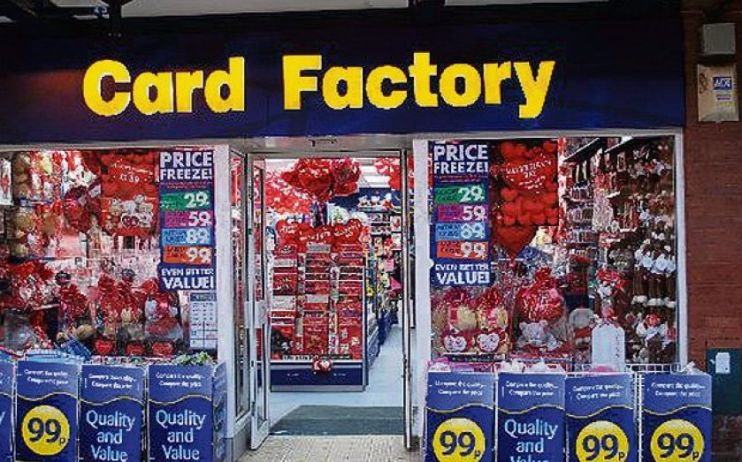New store openings drive revenue increase at Card Factory

Card Factory has reported a jump in revenue this year driven by sales at new stores and a boost in online trading, as sales at existing stores slumped due to falling high street footfall.
In the nine months to 31 October revenue increased five per cent as Card Factory grew its store portfolio with 38 new branches in the year to date.
Read more: Brexit stockpiling dents Card Factory profits
However like-for-like in-store sales dipped 0.4 per cent in the three months to the end of October due to weaker footfall, as the greetings card retailer gears up for the key Christmas trading period. In the year to date, like-for-like store sales are stable at 0.7 per cent.
In the third quarter, Card Factory increased online sales by 16.2 per cent and sales are up 21.9 per cent in the year to date.
“The tradition of sending Christmas cards by post seems to be in decline so Card Factory will have to push ancillary items more, such as wrapping paper, sticky tape and gift boxes, in order to keep driving up sales,” Russ Mould, investment director at AJ Bell said.
He added: “Fundamentally its prices are low and therefore attractive to a wide market but it has to work even harder each year to encourage people to buy its products, particularly as the market is already highly competitive.
“News that rival Clinton Cards is considering shop closures as part of a survival plan may provide a small benefit to Card Factory yet this is also an indication of how tough life is for many retailers.”
Read more: Clintons signs up advisers as greeting car stalwart eyes potential sale
Card Factory chief executive Karen Hubbard said: “I am pleased with our year-to-date performance. Our ongoing focus on customer experience and the quality and range of our card and complementary non-card products has led to an increased average spend both in stores and online.
“This has helped us to substantially offset the effect of the lower high street footfall experienced in the quarter and the corresponding impact on our like-for-like sales.”
Main image credit: Getty